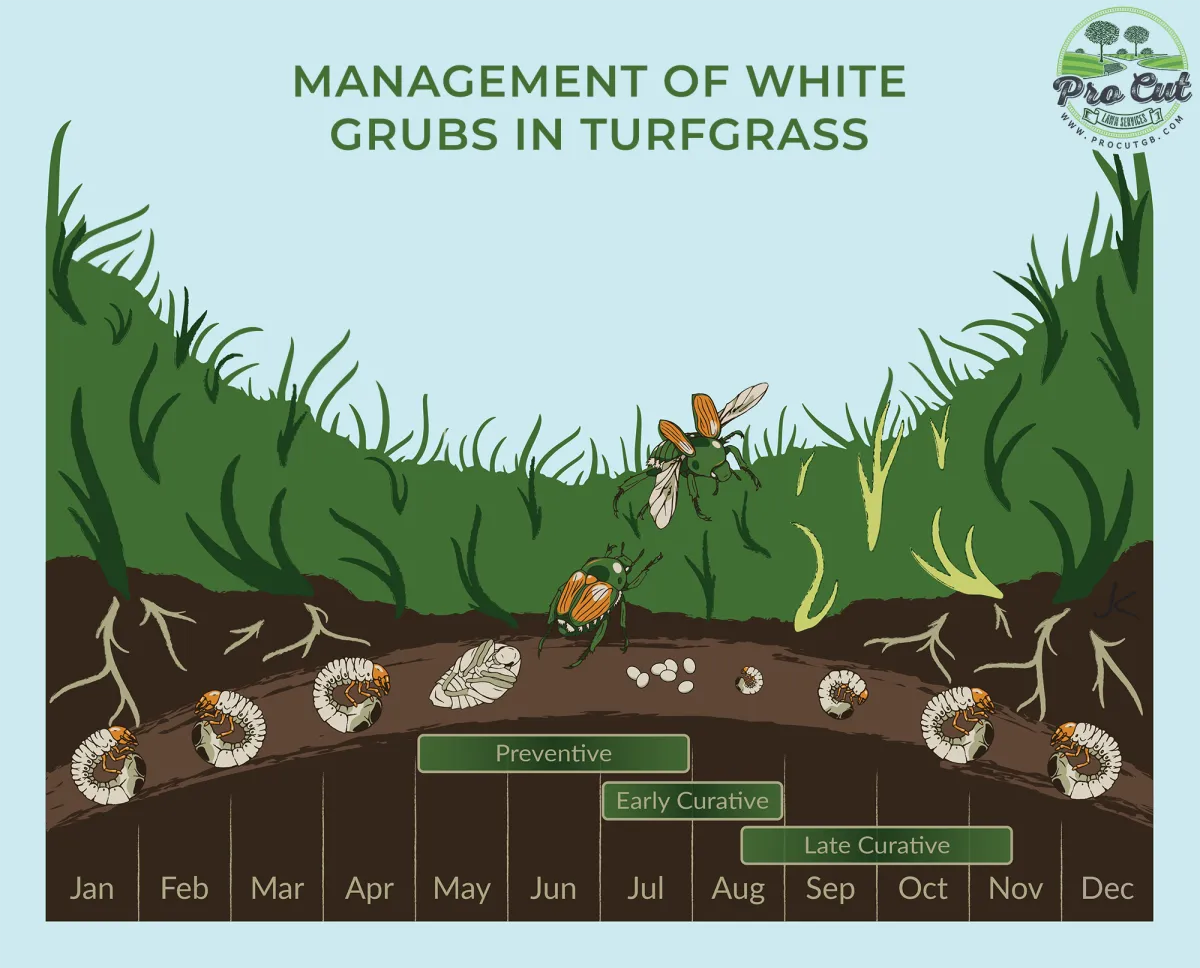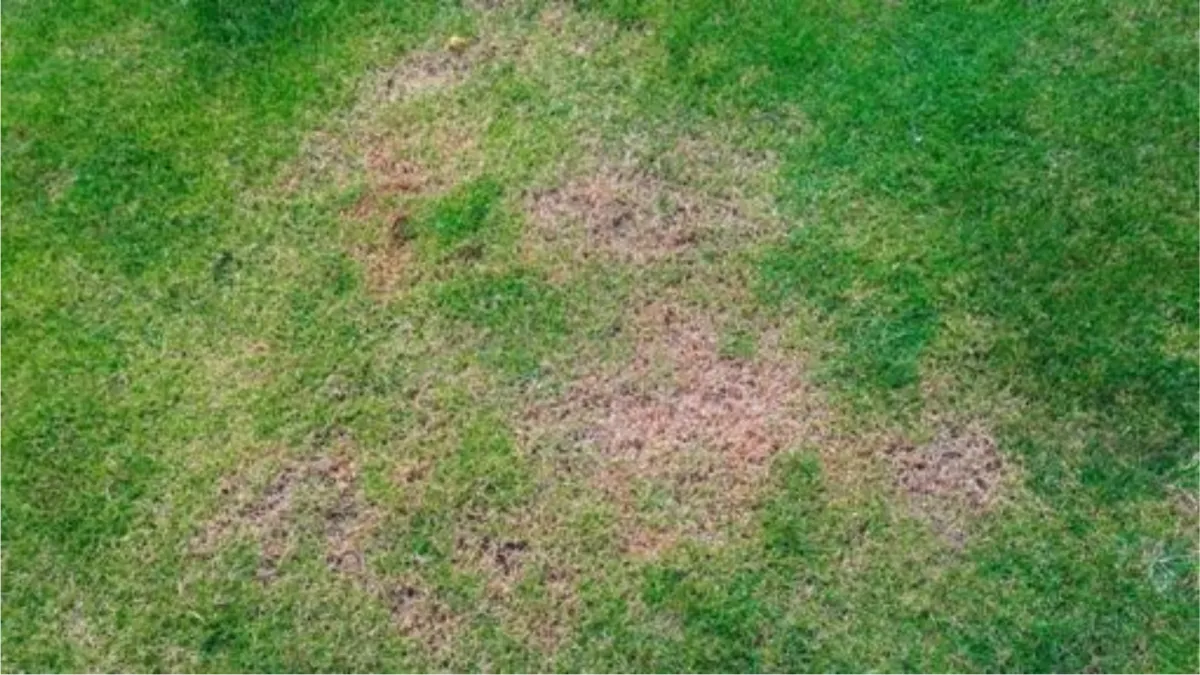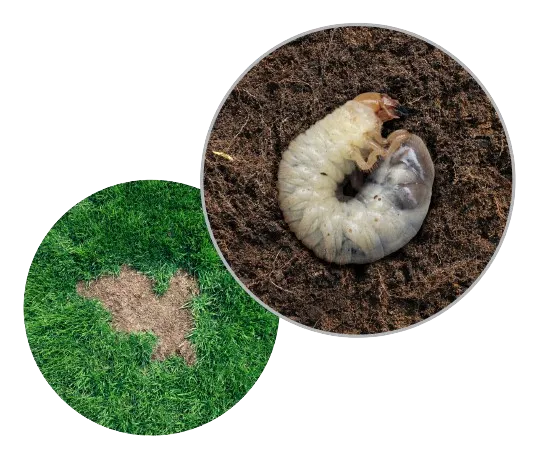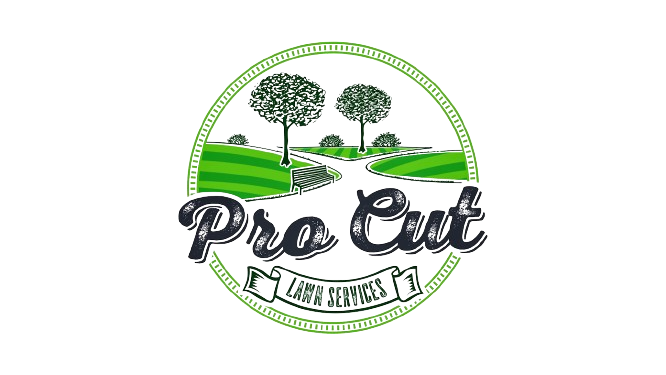Grub & Insect Control
Grub & Insect Control
Pro Cut Lawn Service offers two products for grub control & prevention. One will protect your lawn before the problem occurs, and the other will eliminate the grubs if they already exist and are causing damage.
Grub Prevention: After application, the grub prevention will prevent the next generation of grubs from causing any damage. This can be applied in spring and fall. (2 applications recommended)
Sub Surface Insecticide: This application is performed if you already have a grub problem, the product should be watered in. This application will eliminate the current generation of grubs and will prevent further damage
GRUB CONTROL
Stop the life cycle to help prevent Grub problems before they start.
Timing is everything to stop the life cycle. Grub Control helps stop the eggs from
developing into the damaging, hungry grub larva that feed on your grass roots. To be
effective Grub Control is applied when eggs are present before they molt
into larva. Grub Control can be added to Application 2 of our Weed & Feed Lawn Care Program.

Grub damage on a lawn typically manifests in several ways:
Brown, Dead Patches: Grub damage often causes irregular patches of brown or dead grass to appear on your lawn. These patches may start small but can expand over time as the grubs continue to feed on the grass roots.

Loose, Spongy Turf: As the grubs feed on the grassroots, the turf may become loose and spongy underfoot. This is because the grass is no longer firmly anchored in the soil due to the damage caused by the grubs.
Increased Pest Activity: Grub-infested lawns may attract pests such as birds, skunks, raccoons, or moles that feed on grubs. If you notice an increase in pest activity in your lawn, it could be a sign of a grub infestation.
Presence of Grubs: When inspecting your lawn, you may find the grubs themselves just below the soil surface. Grubs are small, C-shaped larvae with white or cream-colored bodies and brown heads. Finding a high concentration of grubs in the soil is a clear indicator of grub infestation.

Wilting Grass, Even with Sufficient Watering: Despite regular watering, areas of your lawn may still appear wilted or dry. This is because the grubs have damaged the grass roots, preventing them from absorbing water and nutrients effectively.
If you suspect that your lawn has grub damage, it's essential to take action to address the infestation promptly. Consult with a lawn care professional at Pro Cut Lawn Services for appropriate treatment options
Pro Cut Lawn Service offers two products for grub control & prevention. One will protect your lawn before the problem occurs, and the other will eliminate the grubs if they already exist and are causing damage.
Grub Prevention: After application, the grub prevention will prevent the next generation of grubs from causing any damage. This can be applied in spring and fall. (2 applications recommended)
Sub Surface Insecticide: This application is performed if you already have a grub problem, the product should be watered in. This application will eliminate the current generation of grubs and will prevent further damage
GRUB CONTROL
Stop the life cycle to help prevent Grub problems before they start.
Timing is everything to stop the life cycle. Grub Control helps stop the eggs from
developing into the damaging, hungry grub larva that feed on your grass roots. To be
effective Grub Control is applied when eggs are present before they molt
into larva. Grub Control can be added to Application 2 of our Weed & Feed Lawn Care Program.

Grub damage on a lawn typically manifests in several ways:
- Brown, Dead Patches: Grub damage often causes irregular patches of brown or dead grass to appear on your lawn. These patches may start small but can expand over time as the grubs continue to feed on the grass roots.

- Loose, Spongy Turf: As the grubs feed on the grassroots, the turf may become loose and spongy underfoot. This is because the grass is no longer firmly anchored in the soil due to the damage caused by the grubs.
- Increased Pest Activity: Grub-infested lawns may attract pests such as birds, skunks, raccoons, or moles that feed on grubs. If you notice an increase in pest activity in your lawn, it could be a sign of a grub infestation.
- Presence of Grubs: When inspecting your lawn, you may find the grubs themselves just below the soil surface. Grubs are small, C-shaped larvae with white or cream-colored bodies and brown heads. Finding a high concentration of grubs in the soil is a clear indicator of grub infestation.

- Wilting Grass, Even with Sufficient Watering: Despite regular watering, areas of your lawn may still appear wilted or dry. This is because the grubs have damaged the grass roots, preventing them from absorbing water and nutrients effectively.
If you suspect that your lawn has grub damage, it's essential to take action to address the infestation promptly. Consult with a lawn care professional at Pro Cut Lawn Services for appropriate treatment options
Get A Free Quick Quote
Or call (920) 595-1486
Get A Free Quick Quote
Or call (920) 595-1486
FAQS
How often should I mow my lawn?
Our mowing recommendation is to mow the lawn each week as needed, keeping it at a minimum height of three inches.
What's the benefit of lawn aeration and overseeding?
Aeration allows air, water, and nutrients to penetrate the soil, promoting healthier root growth and overall lawn health. Over-seeding introduces new grass seed to thicken your lawn, improving its appearance and resilience. Together, they rejuvenate your lawn, making it more resistant to weeds and disease.
How can I ensure an eco-friendly lawn care service?
To ensure eco-friendly lawn care, ask your provider about their practices. Look for companies that use organic or low-impact fertilizers, minimize pesticide usage, and promote sustainable lawn care practices. Regular soil testing and custom treatment plans can also reduce the need for excessive chemicals while maintaining a vibrant lawn.
How often should i water my lawn
We recommend 1-1.5 inches of water throughout the week, which equates to about 20 minutes of watering per zone five days a week. Watering should be done in the morning hours, if possible, to reduce the risk of turf diseases.
FAQS
How often should I mow my lawn?
Our mowing recommendation is to mow the lawn each week as needed, keeping it at a minimum height of three inches.
What's the benefit of lawn aeration and overseeding?
Aeration allows air, water, and nutrients to penetrate the soil, promoting healthier root growth and overall lawn health. Over-seeding introduces new grass seed to thicken your lawn, improving its appearance and resilience. Together, they rejuvenate your lawn, making it more resistant to weeds and disease.
How can I ensure an eco-friendly lawn care service?
To ensure eco-friendly lawn care, ask your provider about their practices. Look for companies that use organic or low-impact fertilizers, minimize pesticide usage, and promote sustainable lawn care practices. Regular soil testing and custom treatment plans can also reduce the need for excessive chemicals while maintaining a vibrant lawn.
How often should i water my lawn
We recommend 1-1.5 inches of water throughout the week, which equates to about 20 minutes of watering per zone five days a week. Watering should be done in the morning hours, if possible, to reduce the risk of turf diseases.
